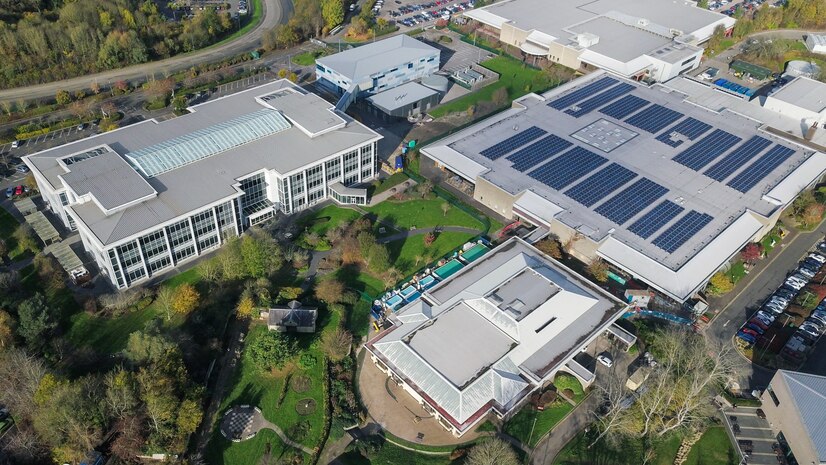As the world shifts toward renewable energy, energy storage solutions are becoming more critical than ever. These technologies allow us to capture and store energy generated from renewable sources like solar and wind, which can be intermittent. With the right energy storage systems, we can optimize renewable energy production, provide a more stable power grid, and reduce our dependence on fossil fuels. In this blog, we’ll dive into the importance of energy storage solutions and how they are changing the future of energy.
What Are Energy Storage Solutions?
Energy storage solutions refer to technologies that store energy for later use. This can include a wide range of systems, such as batteries, pumped hydro storage, compressed air storage, and flywheels. The most common and well-known solution in today’s market is battery energy storage. Batteries are used to store excess energy generated by renewable sources, which can be dispatched when demand is high or when production from renewable sources is low.
For example, during sunny or windy days, solar panels and wind turbines may generate more energy than is needed. Instead of wasting this excess energy, storage systems capture and store it for later use. This makes energy production from renewables more reliable and continuous, even when the sun isn’t shining or the wind isn’t blowing.
The Importance of Energy Storage Solutions
The main reason energy storage solutions are vital is their ability to solve the challenge of intermittent energy production. While solar and wind energy are clean and sustainable, they don’t always align with peak energy demand. Energy storage solutions provide the flexibility to use renewable energy when it’s needed most, instead of relying on fossil fuel-based backup generation.
These solutions also contribute to grid stability. By storing excess energy and discharging it when needed, energy storage systems help balance supply and demand in real time, preventing blackouts and reducing strain on the grid. This becomes increasingly important as more regions adopt renewable energy sources, which can vary in output.
Furthermore, energy storage technologies are key to decarbonizing the energy sector. By reducing our reliance on fossil fuels for backup power, we lower greenhouse gas emissions and reduce pollution. These solutions play a crucial role in advancing the global transition to clean, renewable energy.
Types of Energy Storage Solutions
There are several types of energy storage solutions, each with its own strengths and applications. The most common include:
- Battery Energy Storage: Batteries, especially lithium-ion, are the most widely used technology for storing energy. They are efficient, scalable, and ideal for applications ranging from residential energy storage to large-scale grid storage. These systems are becoming increasingly affordable and are a cornerstone of the renewable energy revolution.
- Pumped Hydro Storage: This form of energy storage uses excess energy to pump water to a higher elevation, where it can be released to generate electricity when needed. Although this solution is limited by geography, it remains one of the most widely used large-scale energy storage technologies.
- Compressed Air Energy Storage (CAES): CAES works by using excess energy to compress air, which is then stored in underground caverns. When energy is needed, the compressed air is released to drive turbines and generate electricity.
- Thermal Energy Storage: Thermal storage systems capture and store heat for later use. These systems are particularly useful for concentrating solar power plants, where heat can be stored and then used to generate electricity during cloudy periods or at night.
The Future of Energy Storage Solutions
As the demand for renewable energy grows, the need for efficient energy storage solutions will only increase. Companies are continually innovating, striving to make these systems more affordable, efficient, and scalable. Research is also underway to develop new storage technologies, such as solid-state batteries, which promise even higher energy densities and longer lifespans.
Another exciting area of development is the integration of energy storage with smart grids. Smart grids use advanced communication and automation technologies to better manage the distribution of electricity. When paired with energy storage, smart grids can optimize the flow of electricity, improve energy efficiency, and ensure a stable power supply.
Moreover, advancements in recycling technologies for batteries are helping address environmental concerns surrounding battery disposal. Companies are now working on creating closed-loop systems where used batteries are repurposed or recycled to reduce waste and lessen the demand for raw materials.
Energy storage solutions are the backbone of the renewable energy future. They not only enable the efficient use of solar and wind power but also help stabilize the grid and reduce carbon emissions. As technology advances and more innovative solutions come to the forefront, energy storage will play an increasingly important role in the global transition to a cleaner, more sustainable energy system. By investing in these technologies today, we are building a stronger foundation for a greener tomorrow.




